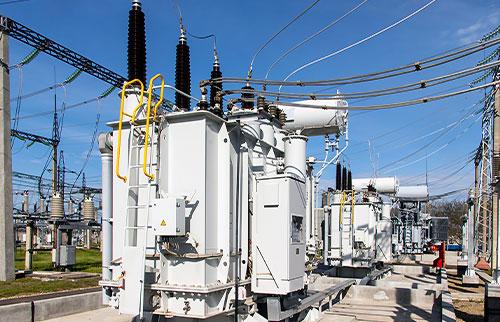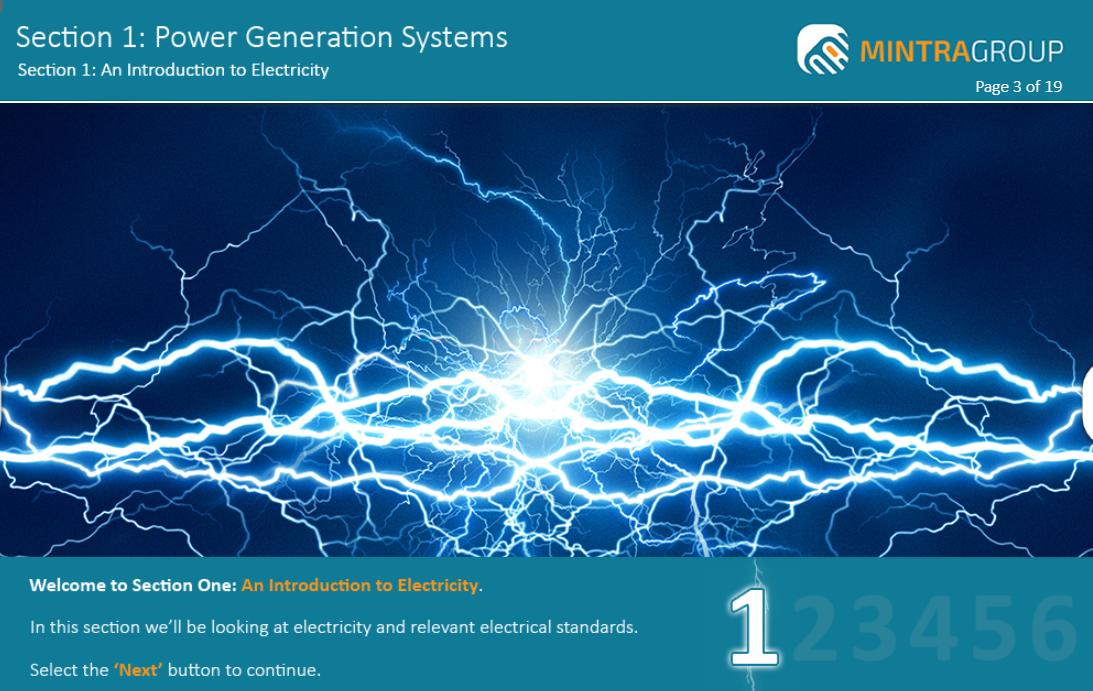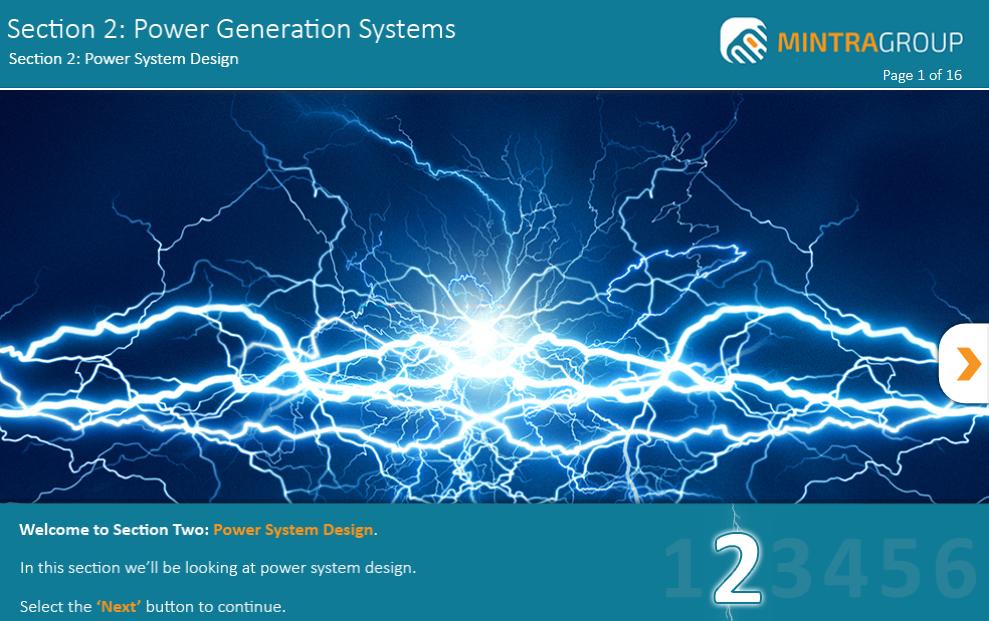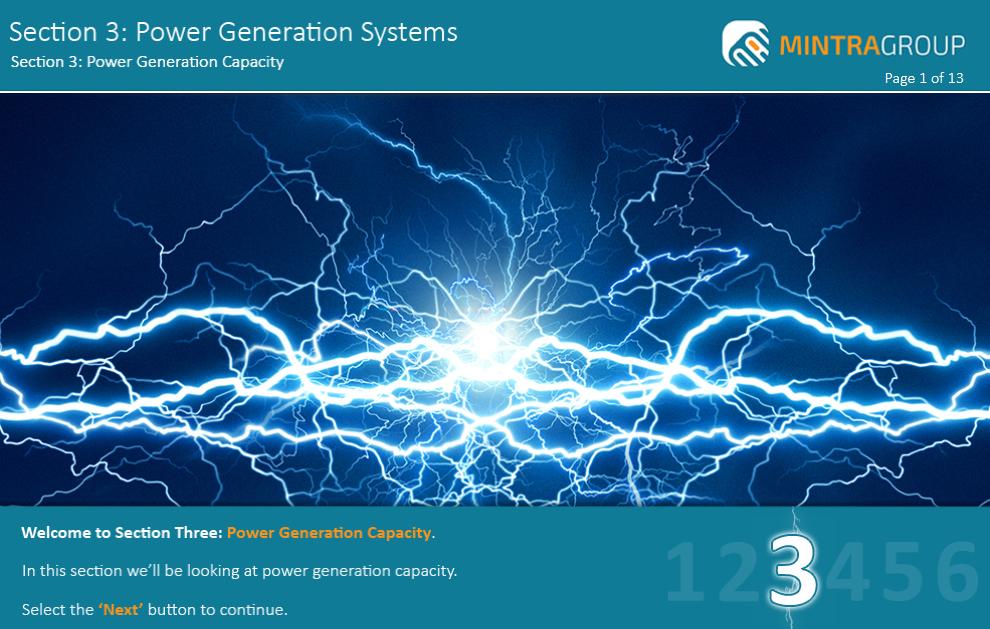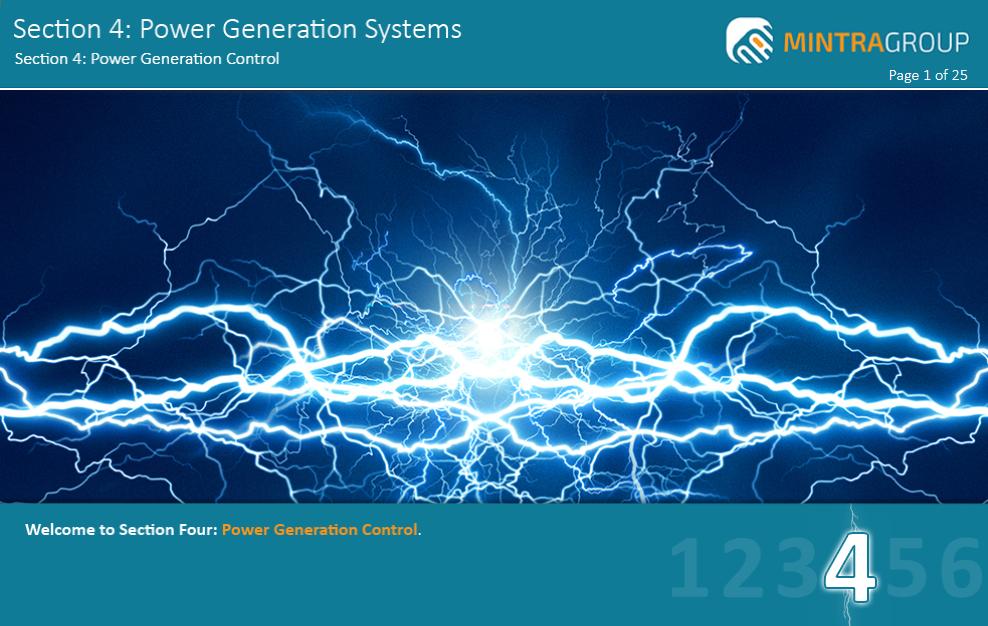Buy and assign to
multiple learners
Instant access
via email link
Instant certificate
via email
Further Information - Power Generation Systems Training
Description
Who is this course for?
This Power Generation Systems Training Course is for personnel requiring an awareness and understanding of power generation systems and their associated risks.
Is previous experience required?
You do not need prior knowledge or experience to complete this course.
How will this course benefit me?
This course aims to provide learners with an overview of power generation systems used offshore.
How will this course benefit my company?
To ensure you have an overview of the power generation systems used offshore including hazards and their associated controls.
What standards are referred to in this course?
The course is made according to industry best practice.
Is there an assessment?
Once you have completed the course, you will be asked a series of questions to check your knowledge and understanding. These are based on the learning objectives for the course and have a pass mark of 80%.
Learning Objectives
• Define electricity
• Give an overview of atoms, electrons, protons and neutrons
• Explain what is meant by negative and positive charge
• Explain what is meant by electromotive force and voltage
• Define what is meant by an electric current
• Give an overview of relevant electrical standards
• Identify the purpose of electrical power systems
• Explain the role of generators in power systems
• Explain the key requirements of power system design
• Identify the three key stages in power systems design
• Identify the information that is required to ensure effective system design
• Identify the three different electrical load classifications
• Explain the purpose of a load schedule
• Explain what is meant by ‘the diversity factor’
• Explain why security of supply is vital to safe operations
• Explain what is meant by spinning reserve power
• Explain the requirements that should be considered when deciding upon the final design configuration
• Give examples of power sources for prime movers
• Describe how power generators operate
• Explain the role of gas turbine generators
• Explain the purpose of emergency generators
• Describe fault currents
• Identify load flow analysis requirements
• Explain what is meant by power system earthing
• Give an example of a fault level calculation
• Describe the role of electrical protection systems
• Explain what is meant by overload protection
• Explain the role of electrical protection systems
• Give an example of electrical discrimination
• Explain the purpose of power system metering
• Explain the role of voltage transformers
• Explain the role of generator control systems
• Describe the requirements of metering and indication equipment
• Identify different protection systems
• Give an overview of power system operation
• Describe what is meant by load shedding
• Explain how generated power is distributed
• Give an overview of switchgear
• Identify a common switchboard distribution arrangement
• Explain the role of power transformers
• Explain the role of power cabling
• Identify the main users of offshore electrical power
• Explain how electric motors operate
• Give an overview of uninterruptible Power Systems (UPSs)
Assessment
Once you have completed the course, you will be asked a series of questions to check your knowledge and understanding. These are based on the learning objectives for the course and have a pass mark of 80%.
System Requirements
• Internet access - users will need a device with a web browser and internet connection
• System - runs on computers, tablets and mobile devices using Windows 7 and above and MAC OS devices running IOS 11 and above
• Browsers - Edge, Chrome, Firefox and Safari
• Minimum browser size - none
• Audio - requires device speaker or headphones
Reviews
Insights & News
At Mintra, we're so much more than just a team—we're a force driving innovation and excellence in maritime training across Europe.
We’re excited to be taking the stage at one of Europe’s leading showcases of organisational learning.
We are delighted to share the exciting news that our People and Culture team has been shortlisted for the prestigious cHeRries Awards!
